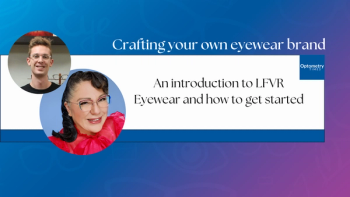
New paradigm for treating dry eye needed to overcome ‘failures’
Dry eye is the most common reason why patients seek help from optometrists and ophthalmologists. It is also a leading cause of intolerance for contact lens users and the discontinuation of their use. However, a new paradigm is needed for “confronting and overcoming failures” in treating ocular surface disease.
Seattle-Dry eye is the most common reason why patients seek help from optometrists and ophthalmologists. It is also a leading cause of intolerance to contact lens users and the discontinuation of their use. However, a new paradigm is needed for “confronting and overcoming failures” in treating ocular surface disease.
At an education session held at the annual meeting of the American Academy of Optometry, Donald Korb, OD, a Boston-based researcher and optometrist and chief technical officer of TearScience Inc., outlined why a new paradigm is needed. TearScience is a company dedicated to the restorative treatment of evaporative dry eye.
Recently, there has been a change in the direction of the prevailing views regarding dry eye. A 2011 workshop changed the paradigm-both for the prevailing views of etiology and treatment-from the traditional aqueous and mucous-based models for dry eye to the inclusion and emphasis of meibomian gland dysfunction (MGD), Dr. Korb explained. MGD is chronic, prevalent, and progressive, and will not “go away unless the root cause goes away.”
‘Lipid deficiency and evaporative stress underlie the dye eye cascade,” said Dr. Korb.
In his presentation, he discussed the current treatments as well as his own new model for the "Dry Eye Cascade," a proposed a mechanism of action for how minimal hypsecretory MGD, which is frequently not obvious, can cascade into a number of negative changes in the eye.
“It is important for patients to understand that dry eye is just not a matter of going to the drug store to get drops,” he said.
Treatments need to be both palliative and restorative, and include both home and professional-based modalities. These include lipid eye drops and sprays, warm compresses, blinking exercises, self-expression, and new treatments, such as the Lipiflow Thermal Pulsation System, which has received FDA approval.
Dr. Korb, who is the inventor and patent holder of Lipiflow, explained that its role is to liquefy, express and evacuate ductal obstruction and gland contents. It only takes 12 minutes and it is painless for the patient.
Newsletter
Want more insights like this? Subscribe to Optometry Times and get clinical pearls and practice tips delivered straight to your inbox.


















































.png)


